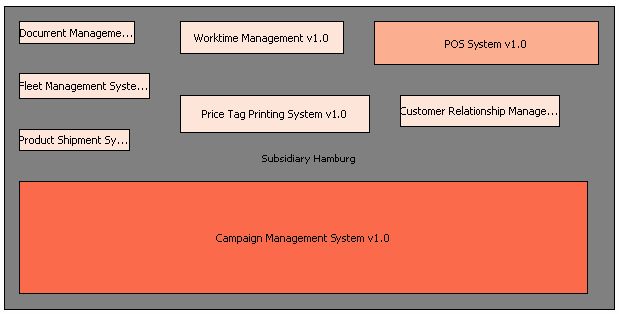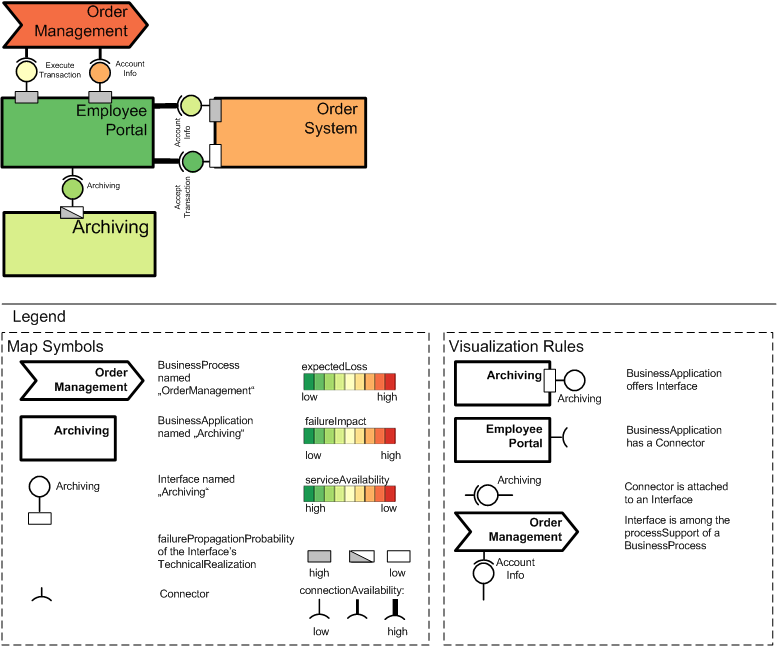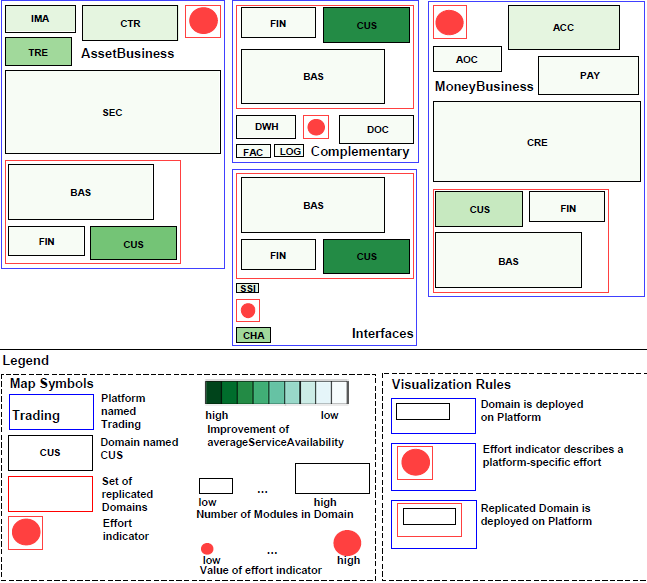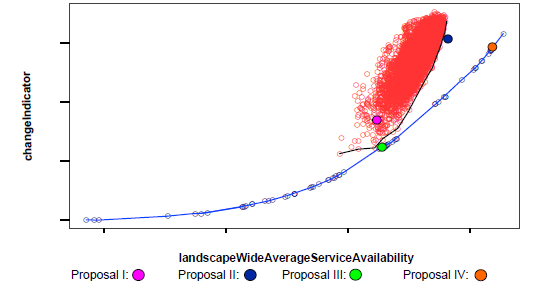The goal of this project was to develop metrics and tools which help to assess quality attributes of application landscapes. Both formal and experimental methods are used in this project.
Sponsors and Partners include
Managing an application landscape has emerged as a new challenge, since the importance, size, and complexity of the landscapes is constantly growing in a major share of organizations. This project researched metrics for application landscapes as a quantitative techique to address this challenge.
Its aim is to make application landscape management more systematic and transparent, and render its goals and their achievement more accessible to both business and IT.
The project “metrics for application landscapes” supplements the visualization techniques of software cartography with methods for quantifying particular attributes of the application landscape. For example, a metric introduced in [LS08] examines dependecies between business applications as a driver for landscape wide failure propagation.
To benefit from such metrics, they have to be calculated automatically from relevant models of an application landscape. After that, the data has to be presented in an appropriate way. In doing so the project especially uses the potential of metric visualizations offered by software cartography. Hence, sebis uses the SyCaTool for automatically generating software map based metrics visualizations.
While the project researched into metrics for application landscapes in general, which led e.g. to the analysis of the environment and status quo for application landscape metrics, and guidelines for designing metrics based methodologies in this environment (see [La08]), the project also developed specific metrics focussing on failure propagation in application landscapes:
These metrics are employed in [La08] by two metrics-based methodologies which address two concerns:
Visualization of metrics by size (visualizes impact of the business application failing on other business applications) and color of symbols (visualizes the availability of the business application):

Viewpoint V-88 from [La08], showing the application landscape structure and its effects on failure propagation:

Showing the improvement of serviceAvailability, a driver for application availability, achieved by a proposal for limiting failure propagation in the application landscape:

Comparing different proposals in respect to a driver for application availability (landscapeWideAverageServiceAvailability) and effort to implement the respective proposals:

| [La08] | Lankes, J.: Metrics for Application Landscapes: Status Quo, Development, and a Case Study. Phd Thesis, TU München, 2008. |
| [LMP04] | Lankes, J.; Matthes, F.; Ploom, T.: Evaluating Failure Propagation in the Application Landscape of a Large Bank. CompArch 2008 Industrial Experience Report Track. |
| [LS08] | Lankes, J.; Schweda, C.M.: Using Metrics to Evaluate Failure Propagation in Application Landscapes. In: Multikonferenz Wirtschaftsinformatik (MKWI) 2008, München, 2008. |
| [LS07] | Lankes, J.; Schweda, C.: Constructing Application Landscape Metrics: Why & How. Technische Universität München, Institut für Informatik, Lehrstuhl für Informatik 19, Technischer Bericht TB0701, 2007. |
| [Er06b] | Ernst, A.; Lankes, J.; Schweda, C.; Wittenburg, A.: Using Model Transformation for Generating Visualizations from Repository Contents - An Application to Software Cartography. Technische Universität München, Institut für Informatik, Lehrstuhl für Informatik 19, Technischer Bericht, 2006. |
| [Ha06] | Hauptmann, Claudius: Methodische Unterstützung der IT-Strategieformulierung und -durchsetzung, Technische Universität München, Fakultät für Informatik, Technische Universität München, Fakultät für Informatik, Projektarbeit, 2006. |